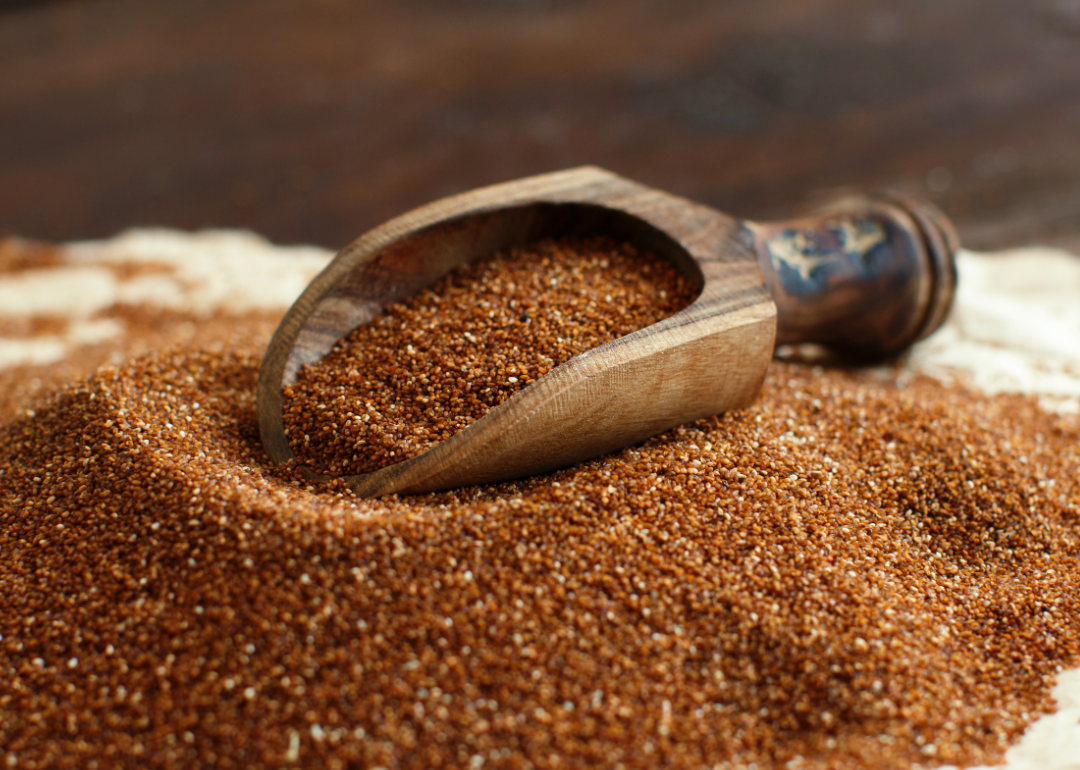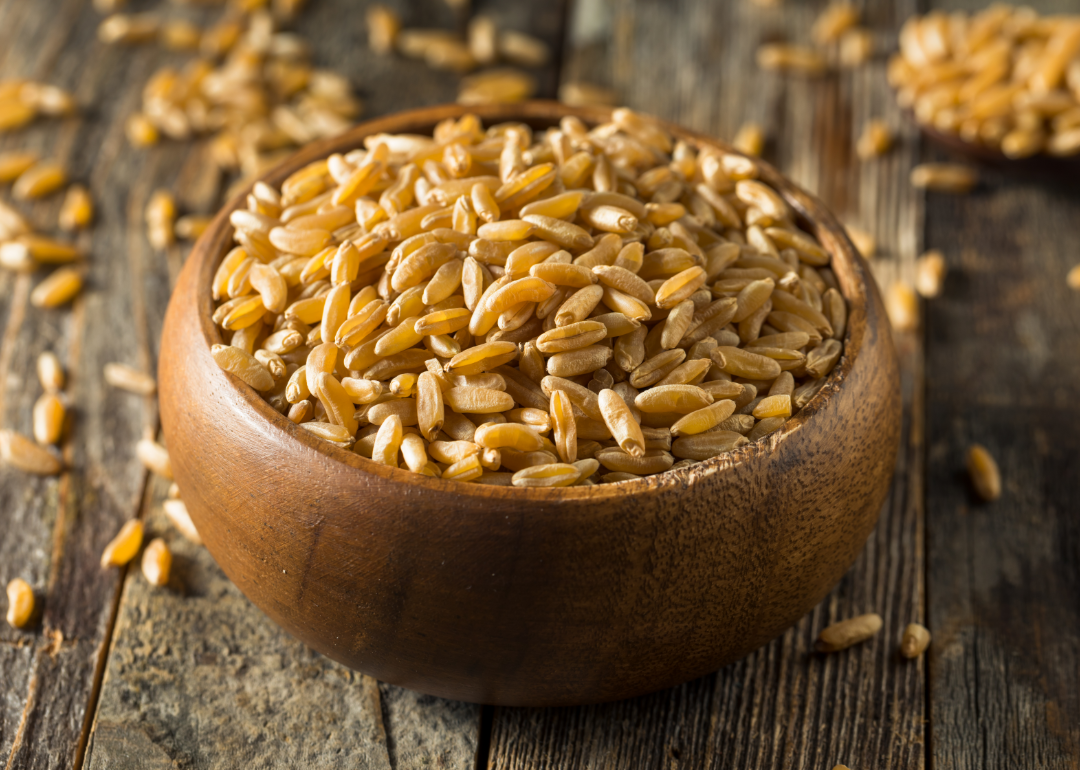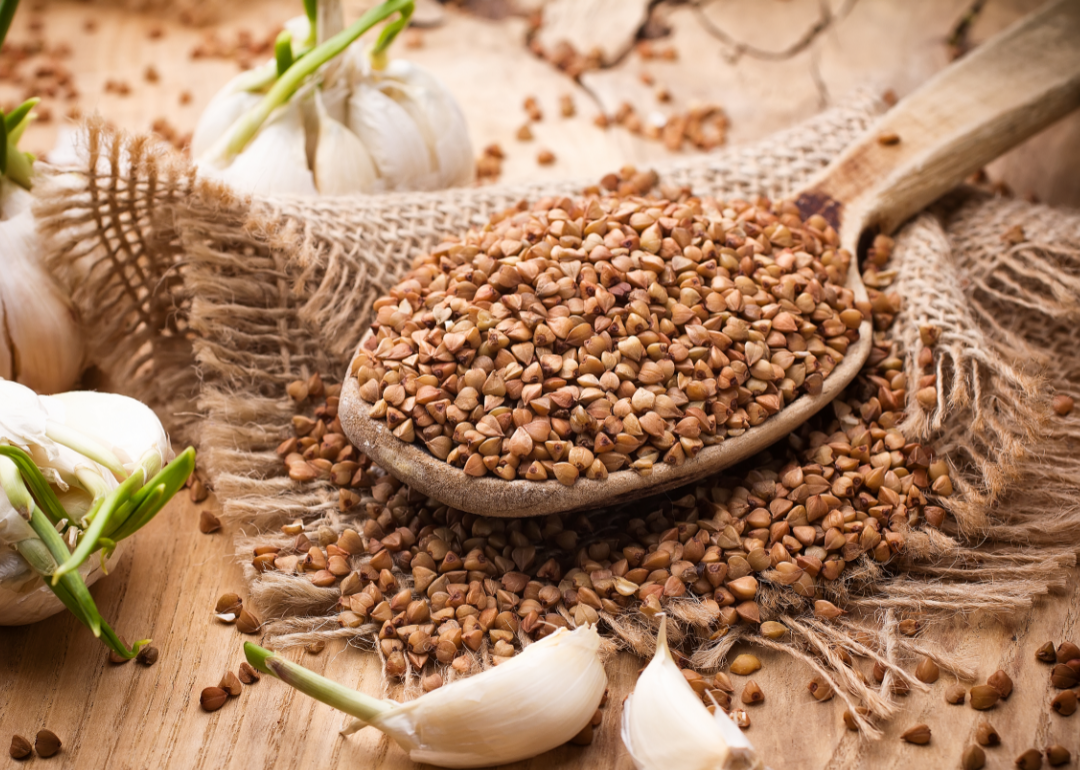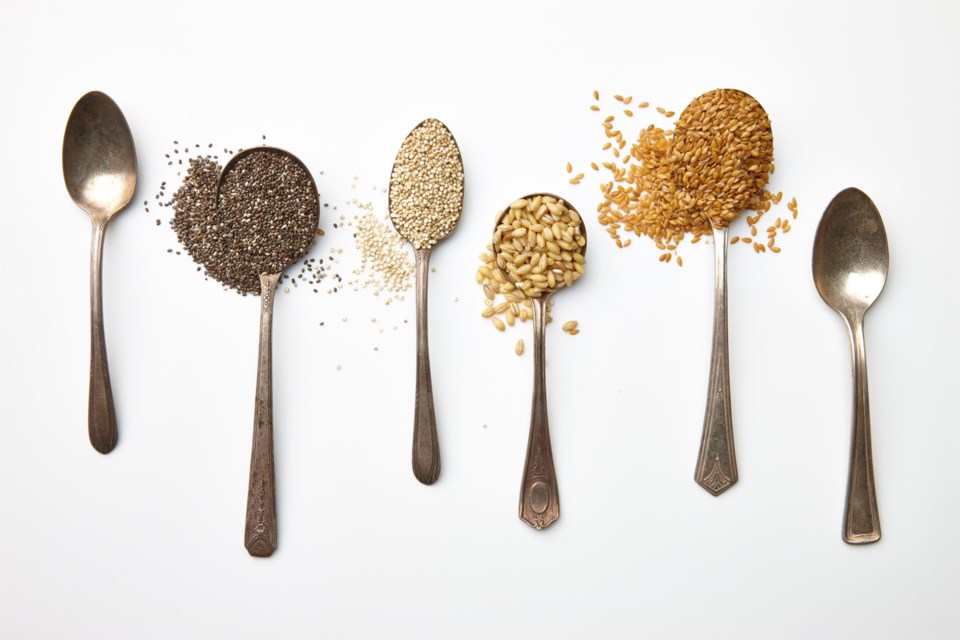Grains have been a staple of the human diet for thousands of years. In some ancient civilizations, they were so valuable that they were used as a form of currency, traded for labor and other goods.
Many Americans today are accustomed to getting their grains through ultra-processed wheat. The standard all-purpose flour is ideal for making hyperpalatable breads, pastries, and other processed foods, but it has been linked to gut imbalances, insulin resistance, and even depression.
Wider awareness of these issues has led to popular diet regimens, such as paleo, that eschew all grains in the name of wellness. But a new crop of nutritionists and foodies are urging Americans to reconsider the health benefits of ancient grains.
"The term 'ancient' has really captured the imagination of people in the last 10 years or so," says journalist Maria Speck, author of Ancient Grains for Modern Meals and Simply Ancient Grains.
Speck explains that ancient grains are simply old-fashioned staples of traditional diets, which look and taste much as they did centuries ago. They're still used in many parts of the world, though they may be less familiar in the United States.
"Their staying power within our global agriculture system is due in large part to their hardiness and resiliency," says Caroline Sluyter, MS, program director for the Whole Grains Council. She adds that modern wheat is a commodity crop, which means it has been bred for specific characteristics that make it easy to plant, grow, harvest, mill, process, and use in the kitchen.
Some ancient grains are more drought-resistant than modern wheat and may also thrive with lower levels of pesticides and fertilizers. Because they tend to be more nutrient-dense than modern grains — and because some of them are gluten-free — ancient grains can often get labelled as just another health trend.
"But calling them a hippie food does not do them justice," Speck says. "My passion in cooking with these grains was always about how they taste, what they bring to the table — the textures, colour, and subtle aromas."
Some ancient grains, like oats or quinoa, are widely known; others, such as teff, millet, or amaranth, may be new to many American cooks. Most of them are prepared like rice or pasta and are relatively simple to incorporate into a weeknight meal.
For Sluyter, the abundance of different types of whole, ancient grains is a real boon for those looking to eat healthier.
"Just as we know a healthy diet should include a wide variety of vegetables and fruits, eating lots of different whole grains is the best way to take advantage of their nutritional benefits."
Experience Life compiled 11 ways to broaden your whole-grain horizons. Here's how you can include more ancient grains in your diet.

Canva
Quick-cooking grains
These varieties are boiled or simmered in a cooking liquid and then set aside to "fluff" for about 10 minutes. They make a perfect addition to a weeknight meal when you want to give rice a rest.
Teff: A staple in eastern Africa, teff boasts a nutty, cocoa-like flavour. Roughly the size of a poppy seed, it can be cooked and eaten like a porridge or polenta, or ground into a flour. Anyone who's eaten Ethiopian injera is familiar with teff flour. Like oatmeal, teff plays especially well with sweet flavours, such as dates, raisins, and maple syrup. Among all grains, it boasts the highest calcium content, with 1 cup containing 123 mg, about the same as a half-cup of cooked spinach.
Millet: You may know millet from bird-feed mixes, but this tiny, gluten-free grain is a mild-tasting grass seed that's packed with minerals. It also requires little water to grow, which has made it popular with farmers concerned about climate change. Millet is consumed around the world, from Africa to China. Because it's so small, it can be easily added raw to baked goods to offer a nutritional boost and crunchy texture. Many cooks recommend toasting millet before cooking in water to bring out a nutty, corn-like flavour.
Bulgur: Common in Middle Eastern cuisine, bulgur can be used instead of rice or quinoa in any side dish, including the most familiar iteration — tabbouleh. Like pasta, bulgur is precooked and dried, and requires only a quick 10-minute boil. It's one of the most fiber-filled grains because it's made by cooking a whole wheat kernel.

Canva
Ancient wheat grains
Anyone who has paged through a vegetarian cookbook from the 1970s may be familiar with these grains, but they offer the modern cook a way to pack a nutritional, pasta-like punch in soups and stews.
Khorasan (or kamut): Even though this grain contains gluten, many people with gluten sensitivities find kamut easy to digest. It's an ancestor to modern wheat, and its large, tooth-shaped kernels are packed with essential minerals like manganese and selenium. They can be puffed and used as a hot or cold cereal, ground into flour, or boiled and used in a grain salad.
Wheat Berries: Of all the ancient grains, wheat berries benefit most from soaking, as the kernels are tough. They are excellent candidates for bulk cooking in an Instant Pot or pressure cooker. Because they're hearty and hold up well in liquid, they're a nice, fiber-rich addition to soups and stews.
Spelt Berries: The gluten in spelt is more water soluble than the gluten in all-purpose flour, which, along with its high fiber content, tends to make it easier to digest. The chewy berries can be added to grain salads or cooked like risotto. You can also buy spelt berries that are ground into flour and use it as you would wheat flour in breads, muffins, pancakes, and more.
Einkorn: Like wheat and spelt, einkorn can be cooked in its whole-berry form or milled into flour. Compared with other grains, it's challenging to grow and mill, so it can be difficult to find in supermarkets. Seek out a specialty shop or an online retailer, and try the toasty berries in your next stir-fry — they'll add a boost of vitamin A and potassium.
Farro: A versatile grain, farro (also called emmer) can be used in risottos or as a swap for pasta. In Italy, where farro is popular, the grain is slightly processed for easier cooking. Check package directions on this one: If unprocessed, farro requires an overnight soak; semi-pearled farro makes for quicker cooking.

Canva
Pseudocereals
Unlike other ancient grains more closely related to modern wheat, pseudocereals are the seeds of other plants, not grasses. Because most are gluten-free, many people have found these grains to be a suitable replacement for wheat products.
Buckwheat: Despite the name, this seed has more in common with rice than wheat. Popular in Asia and Europe, buckwheat groats are used in teas and noodles and can be ground for flour. Buckwheat is gluten-free and cooks quickly. And because it contains all nine essential amino acids, it's considered a complete protein.
Use buckwheat flour to make pancakes, or simmer whole groats on your stovetop to make a sweet or savory porridge (sometimes called kasha).
Quinoa: Global demand for protein-rich quinoa in the mid-2000s transformed the crop from an inexpensive staple for people in the Andes, where it's been grown in Peru and Bolivia for some 5,000 years, into a more expensive export product. Most farmers benefited briefly from the price boom, but commercial quinoa-growing operations in the United States, Canada, and elsewhere have left some small-scale Andean farmers unable to compete. Look for fair-trade quinoa when possible. Quinoa can replace rice and it blends well with the flavours of Latin American and Mediterranean cuisines.
Amaranth: Originally a staple crop of the Aztecs, this high-protein seed remains popular in South America and grows at a variety of elevations. It has a sharp, peppery taste. Because it's gluten-free, amaranth flour is particularly suitable for unleavened breads like tortillas or chapati. In many countries, the seed is popped and eaten like corn.
This story was produced by Experience Life and reviewed and distributed by Stacker Media.



